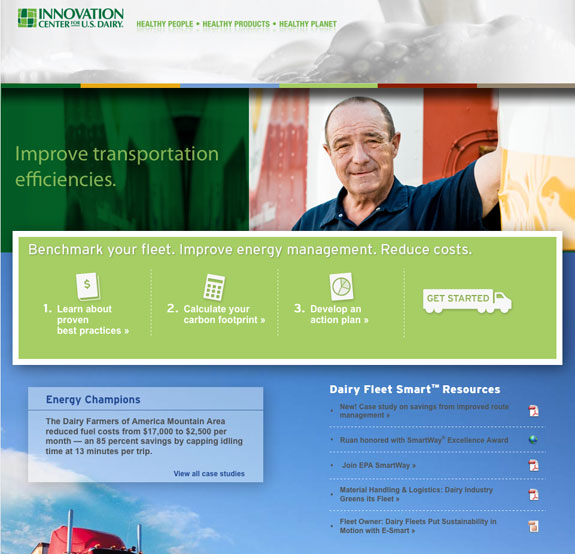Under the leadership of Ruan Transportation Management Systems, a team of industry experts customized the EPA SmartWay assessment tool to develop USDairy.com/FleetSmart, a free online resource provided by the Innovation Center for U.S. Dairy. Jim Mulvenna, senior vice president and general manager of the Dairy and Bulk Food Transport Division at Ruan Transportation Management Systems, explains how this tool can help dairy fleet managers measure and improve their fuel efficiency.
Why was Dairy Fleet Smart developed?
MULVENNA : Dairy Fleet Smart is one of eight initiatives by the Innovation Center for U.S. Dairy to help achieve a voluntary 25 percent reduction in the dairy carbon footprint by 2020.
Fleet Smart is a comprehensive program that promotes efficient use of transportation in the dairy industry to help achieve this objective. The Fleet Smart team encourages dairy transporters to join the EPA SmartWay Program and share best practices for fuel and cost savings within the industry.
Through collaboration with several organizations, the Fleet Smart team developed a tool to help dairy transporters measure their carbon footprint and identify reduction opportunities.
Who should use it?
MULVENNA : The modeling tool used to measure a transportation fleet's carbon footprint can be used by any transportation organization in the dairy industry interested in improving the efficiency of their fleet by reducing their carbon output and fuel costs.
Is there a cost to use it?
MULVENNA : There is no cost to use this tool. It is available on the Innovation Center for U.S. Dairy's website: www.usdairy.com/Fleetsmart/
How does it work?
MULVENNA : Once fleet data is entered into the modeling tool, it accurately measures carbon output. It will tell the user how efficient their fleet is relative to dairy industry average. The user can then change inputs that affect fuel efficiency and cost (equipment, driver habits and operational efficiency factors) and immediately see the projected result on carbon output.
Why is this important to understand or utilize?
MULVENNA : The true measure of any program to reduce carbon from transportation is whether or not it adds value to the user. This program will help fleet managers to not only measure their carbon reduction relative to the Innovation Center goals, but will also measure fleet efficiency in terms of dollars saved on fuel by analyzing the elements that contribute to maximizing efficiency. PD






